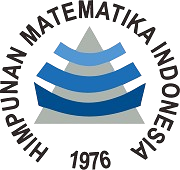Inquiry and Discovery Learning Model in Student's Mathematic Representation Ability
DOI:
https://doi.org/10.30736/voj.v5i1.662Keywords:
Inquiry Learning, Discovery Learning, Mathematical RepresentationAbstract
Representational ability is a very important ability in learning mathematics, with representational ability students can solve mathematical problems. This study aims to compare the two Inquiry and Discovery learning models in overcoming students' representation abilities. This research was conducted at a school in NTB Province, Bima Regency with a total of 60 students with a sample of 30 participants from Science 1 and 30 participants from Science 2. Data collection techniques used observation and interviews. While the instrument uses a test. Data analysis techniques used Prerequisite test (Normality and Homogeneity) and Hypothesis Test (N_Gain, t test). In terms of this research, it shows that during representation learning, these two models really help students to understand the use of mathematical representations.Downloads
References
Agustina, T. B., & Sumartini, Ti. S. (2021). Kemampuan Representasi Matematis Siswa Melalui Model STAD dan TPS. PLUS MINUS : Jurnal Pendidikan Matematika, 1(2), 315–326. https://doi.org/DOI: https://doi.org/10.31980/plusminus.v1i2.1264
Diba, Shofura Farah, Haninda Bharata, and Widyastuti. 2018. “Pengaruh Model Discovery Learning Terhadap Kemampuan Representasi Matematis Siswa.†Jurnal Pendidikan Matematika Unila 6(3):236–47.
Dwirahayu, Gelar, Mayyosi Sandri, and Dedek Kusniawati. 2020. “Inquiry Based RME Terhadap Kemampuan Representasi Matematik Siswa.†FIBONACCI: Jurnal Pendidikan Matematika Dan Matematika 6(1):45–58.
Fiantika, Feni Rita., and Elgie Firdyan Eka. Zhoga. 2021. “Gamelan Sebagai Media Discovery Learning Untuk Mengetahui Kemampuan Representasi Matematik Siswa.†Jurnal Pendidikan Matematika Raflesia 06(01):16–38.
Hapsari, Brilianty Puspa, and Dadang Rahman Muandar. 2019. “Pengaruh Model Pembelajaran Discovery Learning Terhadap Kemampuan Representasi Matematis Peserta Didik.†Prosiding Seminar Nasional Matematika Dan Pendidikan Matematika Sesiomadika 2019 2000:1–11.
Herdiman, Indri, Koentri Jayanti, Kholifia Ayuning Pertiwi, and Resti Naila N. 2018. “Kemampuan Representasi Matematis Siswa SMP Pada Materi Kekongruenan Dan Kesebangunan.†Jurnal Elemen 4(2):216.
I.S, Putra, Islamiati N, and Kolamasari L.I. 2020. “PENGGUNAAN MEDIA PEMBELAJARAN UNTUK MENINGKATKAN PEMAHAMAN MATEMATIKA SISWA PADA PEMBELAJARAN THEOREMA PYHTAGORAS.†JPMI (Jurnal Pembelajaran Matematika Inovatif) 3(4):333–42.
Kusumaningsih, Widya, and Rini Puspita Marta. 2017. “Pengaruh Pembelajaran Berbasis Masalah Dan Discovery Learning Terhadap Kemampuan Representasi Matematis Siswa Smp.†JIPMat 1(2).
Maharani, Dewi, Pentatito Gunowibowo, and Putra Wijaya, Agung. 1972. “PENGARUH MODEL DISCOVERY LEARNING TERHADAP KEMAMPUAN REPRESENTASI MATEMATIS SISWA.†Jurnal Pendidikan Matematika Raflesia 2(2):39–49.
Mahardika, I. Ketut, Afifatur Rofiqoh, and Supeno. 2019. “Model Inkuiri Untuk Meningatkan Kemampuan Representasi Verbal Dan Matematis Pada Pembelajaran Fisika Di Sma.†Jurnal Pembelajaran Fisika 7(2):77–85.
Maryati, Iyam, and Vera Monica. 2021. “Pembelajaran Berbasis Masalah Dan Inkuiri Dalam Kemampuan Representasi Matematis.†Mosharafa: Jurnal Pendidikan Matematika 10(2):333–44.
Mulyaningsih, Sri, Rina Marlina, and Kiki Nia Sania Effendi. 2020. “Analisis Kemampuan Representasi Matematis Siswa SMP Dalam Menyelesaikan Soal Matematika.†JKPM (Jurnal Kajian Pendidikan Matematika) 6(1):99.
Nurfitriyanti, Maya, Rita Rita Kusumawardani, and Indah Lestari. 2020. “Kemampuan Representasi Matematis Peserta Didik Ditinjau Penalaran Matematis Pada Pembelajaran Berbasis Masalah.†Jurnal Gantang 5(1):19–28.
Putra, I. S., M. Masriyah, and R. Sulaiman. 2018. “Students’ Translation Ability of Mathematical Representations (Symbolic and Visual) Based on Their Learning Styles.†Journal of Physics: Conference Series 1108(1):0–7.
Putra, Imam setiadi. 2020. “JUSTIFICATION MATHEMATICS STRATEGY OF THE 7 TH GRADE STUDENT ( MALE AND FAMALE ) IN UNDERSTANDING CONCEPT OF GEOMETRY ( TRIANGLE ).†ẟELT∆ Jurnal Ilmiah Pendidikan Matematika 8(2):181–93.
Putri, A. M., I. K. Mahardika, and N. Nuriman. 2021. “Model Pembelajaran Free Inquiry (Inkuiri Bebas) Dalam Pembelajaran Multirepresentasi Fisika Di Man 2 Jember.†Jurnal Pembelajaran Fisika 324–27.
Ramanisa, Hartiwi, Khairudin Khairudin, and Syukma Netti. 2020. “Analisis Kemampuan Representasi Matematis Siswa.†Jurnal Magister Pendidikan Matematika (JUMADIKA) 2(1):34–38.
Sandy, Rini Asnawati, and Caswati. 2019. “Pengaruh Discovery Learning Terhadap Kemampuan Representasi Matematis Siswa.†Jurnal Pendidikan Matematika Unila 7(2):209–20.
Silviani, Endah, Dian Mardiani, and Deddy Sofyan. 2021. “Analisis Kemampuan Representasi Matematis Siswa SMP Pada Materi Statistika.†Mosharafa: Jurnal Pendidikan Matematika 10(September):483–92.
Suningsih, Ari, and Ana Istiani. 2021. “Analisis Kemampuan Representasi Matematis Siswa.†Mosharafa: Jurnal Pendidikan Matematika 10(2):225–34.
Yuwono, G., I. Mahardika, and A. Gani. 2016. “Pengaruh Model Pembelajaran Inkuiri Terbimbing Terhadap Hasil Belajar Fisika Siswa (Kemampuan Representasi Verbal, Gambar, Matematis, Dan Grafik) Di SMA.†Jurnal Pembelajaran Fisika Universitas Jember 5(1):60–65.
Downloads
Published
How to Cite
Issue
Section
License
Copyright:
Authors who publish their manuscripts in this Journal agree to the following conditions:
- Copyright of any article on Vygotsky: Jurnal Pendidikan Matematika dan Matematika is held solely by the author under the Creative Commons Attribution 4.0 International license (CC BY NC SA).
- Authors can submit papers separately, arrange non-exclusive distribution of manuscripts that have been published in this journal into other versions (e.g. sending to the author's institutional repository, publication in a book, etc.) by acknowledging that the manuscript has been published for the first time in Vygotsky: Jurnal Pendidikan Matematika dan Matematika.
License:
Vygotsky: Jurnal Pendidikan Matematika dan Matematika is published under the terms of the Creative Commons Attribution 4.0 International License (CC BY NC SA). This license permits anyone to copy and redistribute this material in any form or format, compile, modify and develop this material for any purpose as long as it is not for commercial purposes. Additionally, anyone must provide credit and distribute contributions under the license of the creator of the original work.











